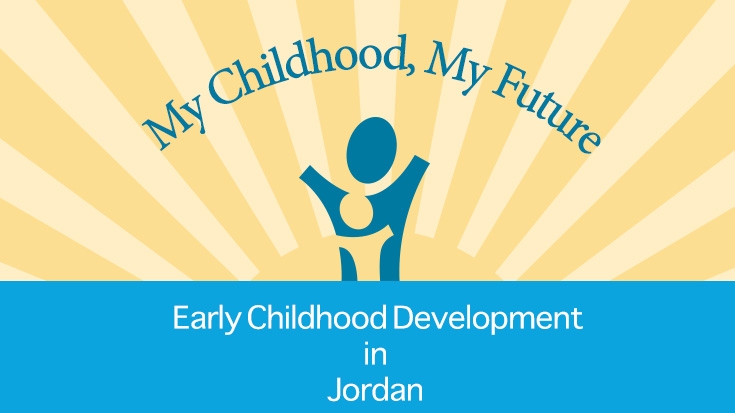The status of Early Childhood Development (ECD) in Jordan
- There is almost universal coverage for prenatal care, and for delivery care with a skilled attendant.
- Neonatal mortality, at 15 deaths per 1000 births, is the same as the regional average, but infant mortality, at 18 deaths per 1000, is below the average of 24 deaths per 1000.
- Immunization campaigns reach most children, with 93% of children age 1 fully immunized.
- At 8%, stunting is low compared to the regional average (18%). However, large differences exist in children’s early nutritional status.
- Jordan has the highest rate of children engaged in childhood development activities (82%) in the region, but less than a quarter (22%) of children attend Early Childhood Care and Education (ECCE).
- Jordan has a very high rate of violent discipline (91%).
Figure 1. Early childhood development indicators for Jordan (%)
Source: Authors’ calculations based on Jordan DHS 2012
Children in Jordan often have different opportunities of healthy development based on factors beyond their control.
There are substantial differences in the opportunities children face in terms of healthy development and accumulating human capital. Early childhood is when cycles of poverty and inequality are transmitted across generations. Children tend to be consistently advantaged or disadvantaged across a variety of different dimensions of ECD, and can face very different chances in life based on just a few family background characteristics. If we observe a child who lives in rural, south Jordan, in the poorest 20% of households, with uneducated parents (a “least advantaged” child), and compare that child to one who has parents with higher education, is from the richest 20% of households, and lives in an urban part of central Jordan (a “most advantaged” child), we find that they have different chances of healthy early childhood development. Figure 2 presents the chances (predicted chance) of different ECD indicators (based on regressions) for these “least advantaged” and “most advantaged” individuals.
For every single indicator, the least advantaged child faces having poorer ECD indicators. Gaps in prenatal and delivery care are relatively small, with the most advantaged child 2 percentage points more likely to get prenatal care, and 5 percentage points more likely to get delivery care. There are large gaps in being fully immunized, with the most advantaged child having an 89% chance but a least advantaged child only a 33% chance. The least advantaged child is 27 percentage points and 17 times more likely to be stunted. The least advantaged child is 45 percentage points less likely to have experienced childhood development activities, and 34 percentage points more likely to be violently disciplined. While the least advantaged child has a 5% chance of attending ECCE, the most advantaged child has a 44% chance. This means that the most advantaged child is almost nine times as likely to experience ECCE which would help him/her develop cognitively, socially, and emotionally.
Figure 2. Inequality in the chances for healthy early childhood development (%)
Source: Authors’ simulations of chances for a “most advantaged” and a “least advantaged” child based on calculations using Jordan DHS 2012


